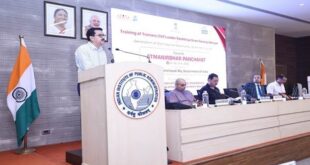- A recent study published in the ‘Lancet Global Health’ is the first comprehensive analysis of India’s neurological diseases burden from 1990 to 2019.
- The study is a part of the Global Burden of Disease Study 2019, which was published by the India State-Level Disease Burden Initiative.
- India State-Level Disease Burden Initiative is a joint initiative of Indian Council of Medical Research (ICMR) along with other public health institutions.
Neurological Disorders
- Meaning: Neurological disorders are diseases of the central and peripheral nervous system. In other words, the brain, spinal cord, cranial nerves, peripheral nerves, nerve roots, autonomic nervous system, neuromuscular junction, and muscles.
- Non-Communicable Neurological Disorders: Stroke, Headache disorders, Epilepsy, Cerebral palsy, Alzheimer’s disease and other dementias, Brain and central nervous system cancer, Parkinson’s disease, Multiple sclerosis, Motor neuron diseases, and other neurological disorders.
Communicable Neurological Disorders: Encephalitis, Meningitis, Tetanus.
Injury-related Neurological Disorders: Traumatic brain injuries, Spinal cord injuries.
Important points:
- Neurological disorders contribute 10% of the total disease burden in India.
- There is a growing burden of non-communicable neurological disorders in the country, which is mainly attributable to the ageing of the population.
- The contribution of non-communicable neurological disorders to total DALYs (disability adjusted life-years) in India doubled from 4% in 1990 to 8·2% in 2019, and the contribution of injury-related neurological disorders increased from 0·2% to 0·6%.
- DALY, a time-based measure that combines years of life lost due to premature mortality and years of life lost due to time lived in states of less than full health, or years of healthy life lost due to disability.
- While communicable diseases contributed to the majority of total neurological disorders burden in children younger than five years, non-communicable neurological disorders were the highest contributor in all other age groups.
- While the burden of infectious neurological disorders has fallen in India, this burden is higher in less developed states.
Way Forward
- Planning of Neurology Services in Each State: The study has called for increased awareness, early identification, cost-effective treatment and rehabilitation among other efforts to reduce the burden of neurological disorders in each state.
- Headache, as a Public Health Issue: Headaches, especially migraine, need to be recognised as a public health problem and included under the National Non-Communicable Diseases programme.
SOURCE: THE HINDU,THE ECONOMIC TIMES,MINT
 Chinmaya IAS Academy – Current Affairs Chinmaya IAS Academy – Current Affairs
Chinmaya IAS Academy – Current Affairs Chinmaya IAS Academy – Current Affairs



